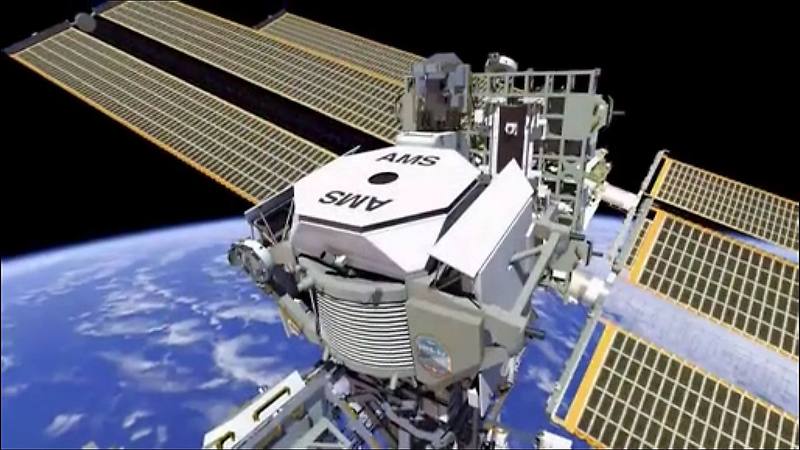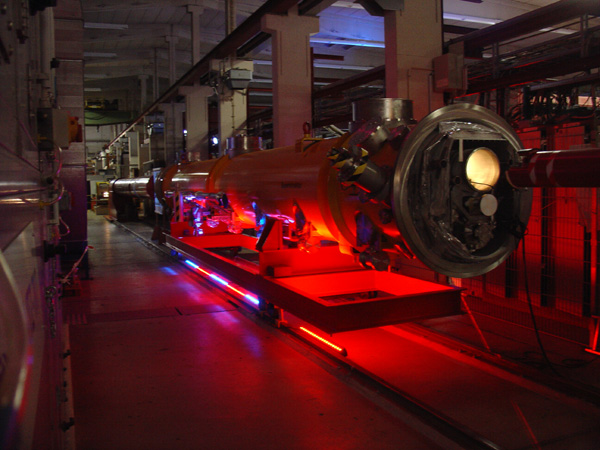
| Instructor: | Laurence G. Yaffe (PAB 404, lgy@uw.edu) |
| Office hours: | 10:30-11:30 Wed and Fri, or by arrangement |
| TAs: | John Lombard (PAB 422, jml448@uw.edu) |
| Ethan Muldoon (PAB 243, ethanm3@uw.edu) | |
| Lectures: | 9:30-10:20pm MWF, room PAA 118 |
| Help sessions: | 5-6pm Mondays (PAB 109) and Tuesdays (PAB 101) |
| Course website: | http://courses.washington.edu/partsym/ |
| Catalyst workspace: | https://catalyst.uw.edu/workspace/lgy/39926/ |
| Clicker registration: | https://catalyst.uw.edu/webq/survey/lgy/265799/ |
| Syllabus |
| Notes |
| Grading |
| Prerequisites |
| Resources |
| Reading |
| Homework |
| Exams |

Particle Physics in the News
- Recent results from the Planck space telescope (12/2/14)
- Using muons to study volcanos (12/2/14)
- New baryons found with quark content bds (11/19/14)
- Evidence for primordial gravitational waves? (probably not) (5/29/14)
- New measurement of proton magnetic moment (5/29/14)
- Why particle physics matters (9/10/13)
- Dark Energy Survey (9/7/13)
- AMS: antimatter in space (4/3/13)
- Chasing the Higgs (3/5/13)
- Search for the Higgs boson at the LHC reveals new particle (7/4/12)
- Daya Bay: Neutrino oscillations and ϑ13 (3/8/12)
- Superluminal neutrinos? (not!) (2/22/12)

Overview
-
This course provides an introduction to the fundamental constituents of
matter and the symmetries which characterize their interactions.
Topics include fundamental symmetries of nature (such as
Lorentz invariance, CPT, and baryon and lepton number conservation),
the "building blocks" of the current Standard Model of nuclear and particle
physics: quarks, gluons and leptons,
the importance of symmetries in characterizing the interactions
of particles, and key experimental evidence on which the Standard Model
is based.


Course objectives
-
Like most physics courses, overall objectives of this course
are two-fold: acquire knowledge about physical aspects of the universe
we live in, and learn to quantitatively analyze physical problems.
More specifically, students will
acquire practical facility with special relativity and its
application to relativistic particle dynamics.
They will learn how to recognize various classes of elementary particles
and predict the type of interactions responsible for their
decays and scatterings.
They will practice performing order-of-magnitude estimates relevant
for interpreting and/or judging the feasibility of a variety
of modern physics experiments.
The course covers material from several different, but related, subject areas. The primary reference is the course notes, accessible below. Students will be expected to master the material in these notes. Carefully studying these notes, including the worked examples at the end of chapters, is essential for success in this class. Read the assigned portions of the notes before class and come prepared to ask questions about any portions which were confusing. There are no other required textbooks, only recommended supplemental texts.
While some homework problems will be typical textbook style problems, focusing on a single concept, many homework problems will focus on analyzing interesting but unfamiliar physical systems using the principles and techniques discussed in this course (and its prerequisites). Every homework assignment should be viewed as providing examples of (often requested) practice exam problems.

Approximate syllabus
| Week 1: | Special relativity |
| Week 2: | Spacetime physics |
| Week 3: | Relativistic dynamics |
| Week 4: | Known particles and interactions |
| Week 5: | Quarks and mesons |
| Week 6: | Baryons |
| Week 7: | Symmetries |
| Week 8: | Isospin |
| Week 9: | Discrete symmetries |
| Week 10: | Force carriers and the standard model |

Course notes
- Complete (with table of contents and index)
- Preface
- Introduction
- Chapter 1: Special relativity
- Chapter 2: Minkowski spacetime
- Chapter 3: Relativistic dynamics
- Chapter 4: Known particles
- Chapter 5: Quarks and hadrons
- Chapter 6: Symmetries
- Chapter 7: Weak interactions
- Appendix A: Basic mathematics
- Appendix B: Quantum mechanics

Grading
There will be weekly homework assignments, one midterm, and a final exam. There will also be frequent clicker quizzes during lecture, designed to encourge you to do the assigned reading before class. Grades will be based approximately 30% on homework, 10% on quizzes, 20% on the midterm, and 40% on the final. The final is a required part of the class.
Homework must be turned in (either in class, or under Prof. Yaffe's office door) by the end of class on the due date, typically a Wednesday. Late homework will be accepted with a 50% discount in points if turned in by the end of class on the class-day following the original due date. (This option cannot be applied to part of an assignment; late submissions will be accepted only when no part of the assignment was turned in on time.) To make grading as efficient and error-free as possible, homework assignments must be submitted on clean 8.5x11 inch paper, stapled in the upper left-hand corner. Writing must be easily legible. Illegible work, or submissions on off-size or ragged-edge paper torn from a spiral notebook, will receive no credit.
Scores on quizzes, homework assignments, and the midterm exam may be seen on the Catalyst gradebook.

Prerequisites
Prior successful completion of Phys 121/122/123 (Introductory Physics), Phys 225 (Quantum I) and Phys 227 (Elementary Mathematical Physics I) is required.
Ability to use material covered in these prerequisite courses is assumed. In particular, it is expected that students entering Phys 226 will have a basic working knowledge of quantum mechanics (including bras and kets, quantum time evolution, observables and expectation values, spin-1/2 and related two-state systems, quantized angular momentum). Facility with complex variables and complex arithmetic, trigonometric and hyperbolic functions, linear transformations on vectors (including infinite dimensional vector spaces), eigenvalues and eigenvectors is assumed.
For in-class use, students must have an H-ITT radio-frequency clicker, available new from the UBookstore, or sometimes used from sellers on Amazon or Ebay. Be sure to get the RF version: model TX3100 or TX3200.

Useful Resources
-
The course notes are the primary reference for this class,
but these supplemental books may also be useful:
Introduction to Relativity by John B. Kogut
Introduction to Nuclear and Particle Physics by A. Das and T. Ferbel
Particle Data Group: Constants, Units, Atomic and Nuclear Properties
Particle Data Group: Summary Tables of Particle Properties
Particle Adventure (a breezy interactive tour from the Particle Data Group)
Introductory LHC videos
Interactive Table of Nuclides from the
Korea Atomic Energy Research Institute
Interactive Chart of Nuclides from the
National Nuclear Data Center at BNL
1964 Messenger Lectures by Richard Feynman
(requires MS Silverlight)


Reading Assignments
-
Read prior to the indicated days (subject to change).
| Days | Course notes |
| Mar 30-Apr 1 | chapters 0 & 1, appendix A |
| Apr 3-8 | chapter 2 |
| Apr 10-15 | chapter 3 |
| Apr 20-22 | chapter 4 |
| Apr 24-May 1 | chapter 5, appendix B |
| May 4-8 | more chapter 5, & midterm |
| May 11-15 | finish chapter 5 |
| May 18-22 | chapter 6 |
| May 25 | Memorial Day holiday |
| May 27-29 | finish chapter 6, start chapter 7 |
| Jun 1-5 | chapter 7 |

Homework Assignments
-
Homework is due every Wednesday.
New homework assignments, and solutions to the previous assignment, are posted weekly on the Catalyst workspace.

Exams
-
Exams will be closed book, closed notes, but a summary sheet will
be provided.
- Midterm: Friday May 8, 9:30-10:20am, in A118
- Final: Wednesday June 10, 8:30-10:20am, in A118
| midterm summary sheet. | |
| final summary sheet. |